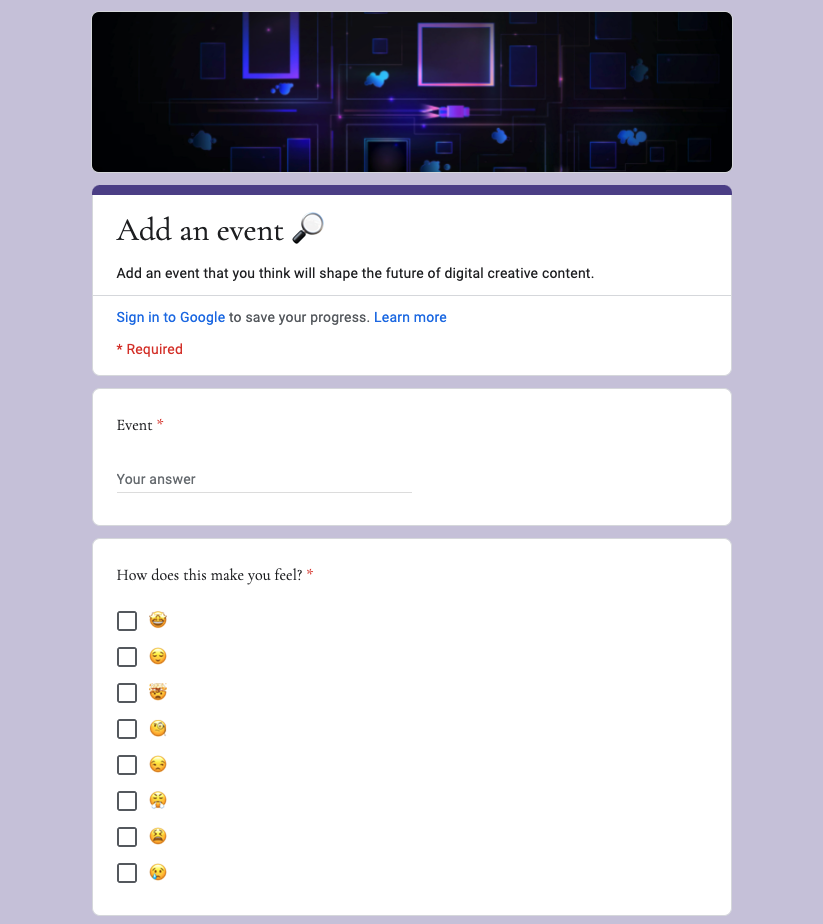Parsons’ Futures Studies and Speculative Design Certification explores strategies for navigating the complex questions individuals, communities, governments, and businesses all face when making plans for the future. The coursework explores the application of sensory experiences to futures studies theory and methods to develop projections of scenarios and examine ways futures discourse can shape a project’s or company’s path forward.



My work in this program explores the future of digital creative content and how it relates to creativity, class, and commerce. Over the course of 60 days, I collected more than 100 signals across the digital content landscape including news from film, music, video, photography, illustration, 3D, XR segments.
The data collected largely pertained to content platforms such as Youtube, Tiktok, Facebook, Twitch, Reddit, Netflix, Spotify, HBO, Hulu, and Steam, but also collected signals regarding payment platforms, technology companies, legal groups, and decentralized spaces.

I organized these signals using several traditional and non-traditional models. I started by the incorporating the STEEP model into my signals tags, which identifies the following types of signals:
- Social
- Technological
- Economic
- Economic
- Political


Using a signals collection form I created, I was able to collect additional data on emotional responses to these events, as well as which aspects of the digital content industry they affect and which people were affected by them. These additional tags allowed me to explore the nuances in the relationships of these signals. I organized these variables of influence with the following model:
People
|
Processes
|
Emotions
|


Visually charting these signals using an impact probability matrix of these signals was the first step in finding patterns and trends in the signals data.

After synthesizing all of this information, I developed a 2x2 scenario planning matrix exploring 4 possible narratives relating the cost of goods and the cost of creative. From there, I further developed a series of narrative scenarios which detailed the human experience of how these scenarios could play out.


This speculative design process led to the development of a conceptual, interactive data mapping game, in which everyone could democratically participate in the collection and tagging of content creation signals. Since this industry affects almost everyone, the most immersive element to this project was exploring how the research itself could make everyone a consumer, and everyone a creator.
Partipants submitting, ideating and exploring the data themselves was designed to aggregate algorithmically recommended signals as well as emotional responses to this continuously evolving landscape.

